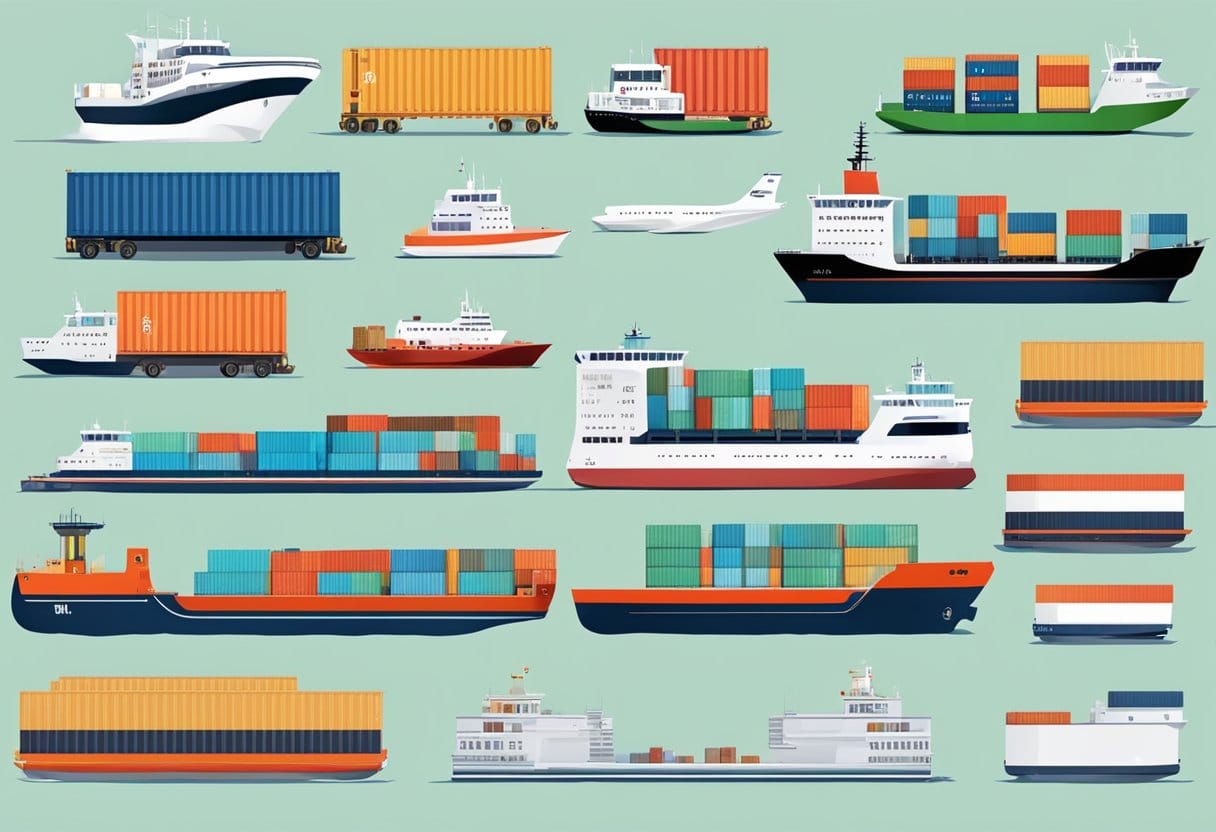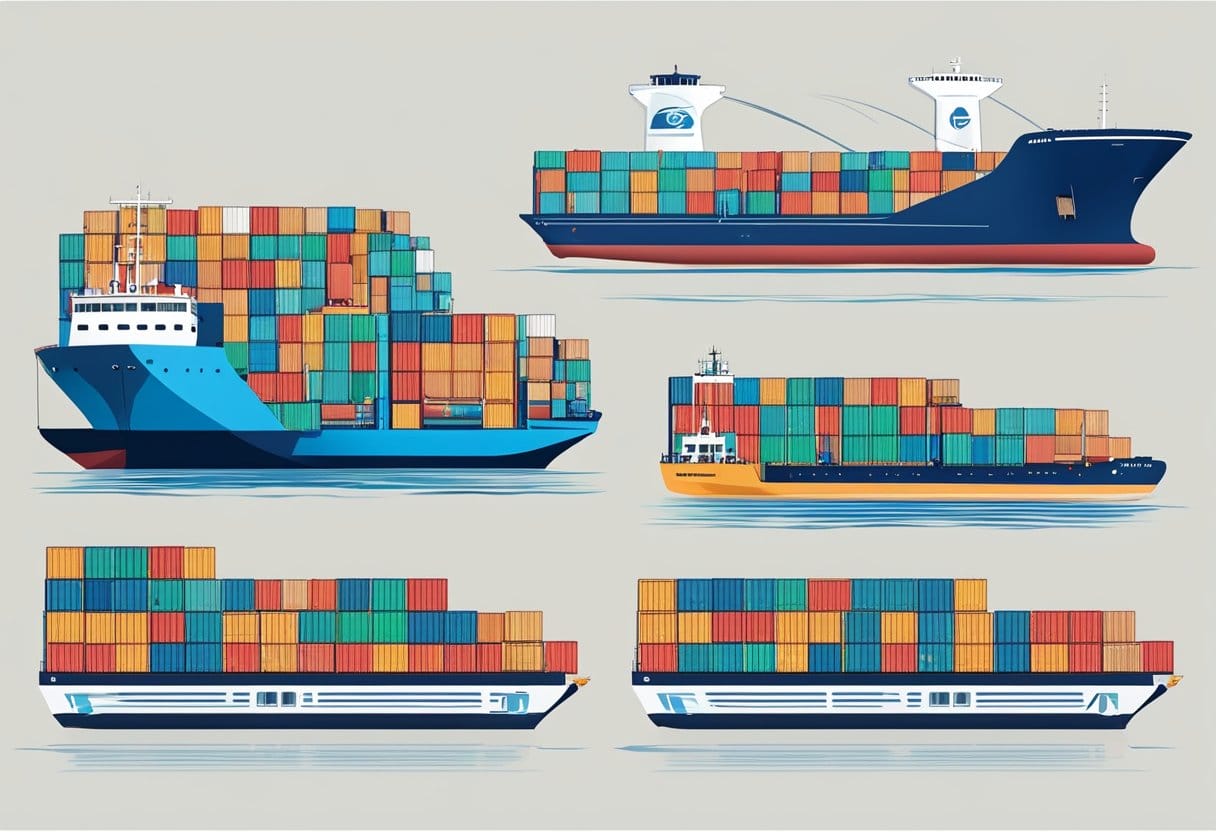What Does Shipping Method Mean: An Essential Guide to Delivery Options

In the context of ecommerce, the importance of shipping strategies cannot be overlooked. These methods primarily oversee the transportation of goods from a business to its customers. The choice of shipping service can markedly affect the cost, speed, and reliability of the delivery process. Undeniably, these factors can determine the success of the business and the satisfaction level of its customers. Remember, a carefully chosen shipping strategy is an essential component of a successful ecommerce business.
Various shipping carriers provide diverse delivery options, from next-day air to ground shipping. Businesses must consider factors like destination, weight, and value of the items while selecting a shipping method. The right choice can lead to quicker delivery, cost reduction, and increased customer satisfaction.
Key Takeaways
- Shipping methods are crucial in ecommerce as they impact delivery time, cost, and customer satisfaction.
- A wide array of delivery options are provided by popular shipping carriers.
- The choice of a shipping method is influenced by factors like destination, item weight, and value.
Understanding Shipping Methods
Basics of Shipping Methods
Shipping methods represent the myriad choices available for delivering products to customers. They are vital to any ecommerce business as they affect the overall customer experience. As a business owner, it’s necessary to understand the pros and cons of each shipping option as it impacts your shipping costs and delivery times.
Common shipping methods are standard shipping, flat rate shipping, expedited shipping, and international shipping. These methods each have unique pricing structures and delivery times, based on aspects such as destination, package size, and the carrier used.
When choosing a shipping method, take into account factors like delivery time, shipping costs, and customer preferences. Providing multiple shipping options allows your customers the flexibility to choose a method that suits them best.
Types of Shipping
Standard Shipping: This common, cost-effective shipping option typically delivers in 3 to 7 business days. It’s a good choice for non-urgent orders and helps minimize your overall shipping costs.
Flat Rate Shipping: This method charges a fixed rate for shipping, irrespective of package size, weight, or destination. Flat rate shipping simplifies the shipping process and allows customers to understand their delivery costs upfront.
Economy Shipping: This option offers affordable shipping for customers not in a hurry to receive their orders. With delivery times typically ranging from 5 to 10 business days, economy shipping is especially cost-effective for larger or heavily weighted packages.
Expedited Shipping: For customers needing quick delivery, this method provides fast delivery times, usually between 2 to 3 business days. Although it comes at a higher cost, expedited shipping is ideal for time-sensitive purchases.
International Shipping: If you ship to multiple countries, international shipping is necessary. This method includes additional costs such as customs fees and taxes. Delivery times vary greatly, depending on the destination and carrier.
Local Delivery: For businesses catering to a local customer base, local delivery adds a personalized touch. This method often involves same-day or next-day delivery and is usually cheaper compared to other options.
Free Shipping: A popular strategy to attract customers, free shipping eliminates shipping costs for the customer. It can be offered for all orders, orders exceeding a certain value, or as a promotional offer during specific periods.
Overnight Shipping: Best for urgent orders, this method provides next-day delivery at a premium cost. It is typically reserved for high-priority or time-sensitive items.
Express Shipping: A more affordable option compared to overnight shipping, express shipping delivers packages within 1 to 2 business days. It is popular among customers needing quick delivery.
Freight Shipping: Best for heavy or oversized items, freight shipping involves specialized carriers and equipment. It’s typically used for shipping pallets, machinery, or large furniture items.
Understanding various shipping methods and offering your customers a range of options can enhance their shopping experience and cater to their individual preferences.
Popular Shipping Carriers

United States Based Carriers
In the United States, several notable shipping carriers offer a variety of services to meet various business and individual shipping needs. The government-run United States Postal Service (USPS) provides affordable options such as USPS Priority Mail and ground shipping.
FedEx, another premier carrier, offers services ranging from FedEx Ground to expedited services. Both USPS and FedEx have expansive networks across the country, ensuring timely deliveries and competitive pricing.
International Carriers
For international shipping, businesses often rely on specialist carriers that handle international shipments and navigate the intricacies of customs and import/export regulations. DHL is a popular global shipping carrier, offering efficient international shipping and delivery services. Other carriers, like UPS and FedEx, also provide international delivery services to cater to the growing demand for cross-border ecommerce.
Local and Ecommerce Carriers
In addition to global and national carriers, local shipping companies and ecommerce platforms offer their own delivery services. These services are tailored to meet the unique needs of ecommerce businesses, providing fast and reliable shipping options.
Local shipping carriers operate within specific regions, offering cost-effective, efficient services for small businesses and individuals. On the other hand, ecommerce platforms like Shopify and WooCommerce provide ecommerce shipping methods designed for their users, streamlining the shipping process and ensuring a seamless experience for online shoppers.
By understanding the various shipping carriers and their offerings, you can choose the best options for your business and ensure a smooth, efficient shipping experience for your customers.
Factors Influencing Shipping Method Choice
Cost Considerations
Shipping costs significantly impact the overall price of a shipment. Comparing associated fees and rates is crucial while assessing various options, considering factors like:
Flat Rate vs. Variable Rate: Some carriers offer flat rates, suitable for certain package sizes and destinations, while others calculate costs based on package weight and dimensions. It’s important to evaluate the shipping rates and fees of each carrier to find the most suitable option.
Shipping Speed: Shipping time and cost are directly related. Expedited services such as overnight shipping or same-day delivery are more expensive than standard shipping options. Consider the priority of shipping speed against possible increased fees.
Additional Fees: Some carriers charge extra for specific services or package requirements. Include any potential additional fees when comparing the overall cost of different shipping options.
Time Sensitivity
Time sensitivity of your goods is a critical factor in choosing the most suitable shipping method. Depending on your requirements, consider:
Delivery Time: If quick delivery is needed, expedited and overnight shipping options can ensure on-time arrival. If time is not a priority, cost-effective standard shipping is a good option.
Shipping Speed: The shipping speed of different carriers varies. Compare estimated delivery times to select the best option.
Choose the most suitable shipping method by carefully considering cost and time sensitivity. This careful evaluation ensures safe and efficient delivery and meets your specific requirements.
The Role of Shipping in Ecommerce
Shipping and Customer Experience
In ecommerce, shipping significantly influences the customer experience. By using reliable shipping services and partnering with reputable carriers, you can ensure timely and accurate order delivery. The choice of shipping service also directly impacts the customer’s overall brand satisfaction, as it determines shipping speed and associated costs.
Effect on Shopping Cart Abandonment
A major challenge for ecommerce businesses is shopping cart abandonment, which occurs when customers add items to their cart but don’t complete the purchase. The shipping method you offer can significantly influence cart abandonment rates. High shipping costs or long delivery times can discourage customers, leading to abandoned carts. By offering competitive shipping options, you can encourage customers to complete their purchases and grow your business.
Offering Multiple Shipping Options
Providing a variety of ecommerce shipping methods caters to different customer needs and preferences. By offering options like next-day delivery, standard shipping, and click and collect (store pickup), you can attract a wider customer base. Flexible shipping options also allow your business to compete with major ecommerce companies, as customers increasingly expect fast and convenient delivery services.
Inventory and Order Management
Efficient inventory and order management processes are vital in fulfilling customer orders accurately and on time. Ecommerce shipping software, warehouse management systems, and integration with ecommerce platforms maintain seamless operations. Streamlined inventory management and order fulfilment help monitor stock levels and optimize the ecommerce shipping process, ensuring smooth operations for your business and customers.
Advanced Shipping Options and Strategies
Supply Chain and Warehouse Management
Efficient supply chain and warehouse management promote a seamless shipping process. As a business owner, it’s essential to manage inventory, picking, packing, and dispatch preparation efficiently. Factors like product size and weight, shipping zones, and carrier choices significantly impact your shipping strategy.
Shipping Labels and Tracking Systems
Incorporating shipping labels and tracking systems into your shipping process enhances the customer experience. Labels must display necessary details such as the origin and destination addresses, while tracking systems allow you and your customers to monitor order status.
QR Codes and Social Media
Utilizing QR codes and social media can enhance the shipping experience. QR codes on labels can link customers directly to tracking or delivery updates. Additionally, social media platforms can provide shipment notifications and essential customer support in case of damage or loss.
Modes of Transportation
The choice of transportation plays a significant role in shaping your shipping strategy. Choosing the right modes of transportation like air freight, FTL (full truckload), LTL (less than truckload), and small parcel services can improve efficiency and save costs while meeting different delivery requirements. Consider factors like weight limits, shipping distances, and delivery speed while deciding on the best option.
Striking a balance between cost and efficiency is crucial in devising shipping methods. The optimal shipping solutions that cater to your specific business needs lead to success and high levels of customer satisfaction.
Frequently Asked Questions
What are common shipping methods in ecommerce?
Common shipping methods in ecommerce include ground, air, and ocean freight. These cater to different sizes, weights, and destinations of packages. Ground shipping encompasses small parcel and less-than-truckload (LTL) services, while air and ocean freight are used for larger and heavier packages or international shipments. Some well-known carriers providing these are UPS, FedEx, DHL, and USPS.
How do shipping methods differ for international and domestic orders?
International shipping methods include air and sea freight, and road transportation for cross-border shipments, chosen based on the destination, package size, weight, and delivery speed requirements. For domestic orders, ground shipping (small parcel and LTL) and air freight are commonly used, with the decision depending on costs, delivery speed, and regional limitations.
What factors determine the choice of a shipping method?
Factors influencing the choice of the shipping method include order size and weight, destination distance, shipping costs, and delivery speed requirements. Shipping carriers and methods affect the cost and transit time, playing significant roles in the choice of the best option.
How does the shipping method impact delivery time?
The chosen shipping method directly affects delivery time. Ground shipping usually takes longer due to the logistics involved, while air freight provides faster long-distance or international delivery. Sea freight tends to be slower but ultimately more affordable for sizeable, heavy packages.
What is the difference between standard and express shipping methods?
Standard shipping is more cost-effective but typically takes longer, whereas express shipping is designed for time-sensitive deliveries, offering faster delivery at a higher cost. Express shipping often includes next-day or two-day delivery, while standard shipping can range between three to ten business days.
How do FOB and other shipping terms affect the shipping method?
Shipping terms like Free On Board (FOB) define the responsibilities of buyers and sellers concerning the transportation and handling of goods. Understanding these terms can help choose the most suitable shipping method based on your business model and shipment requirements.





